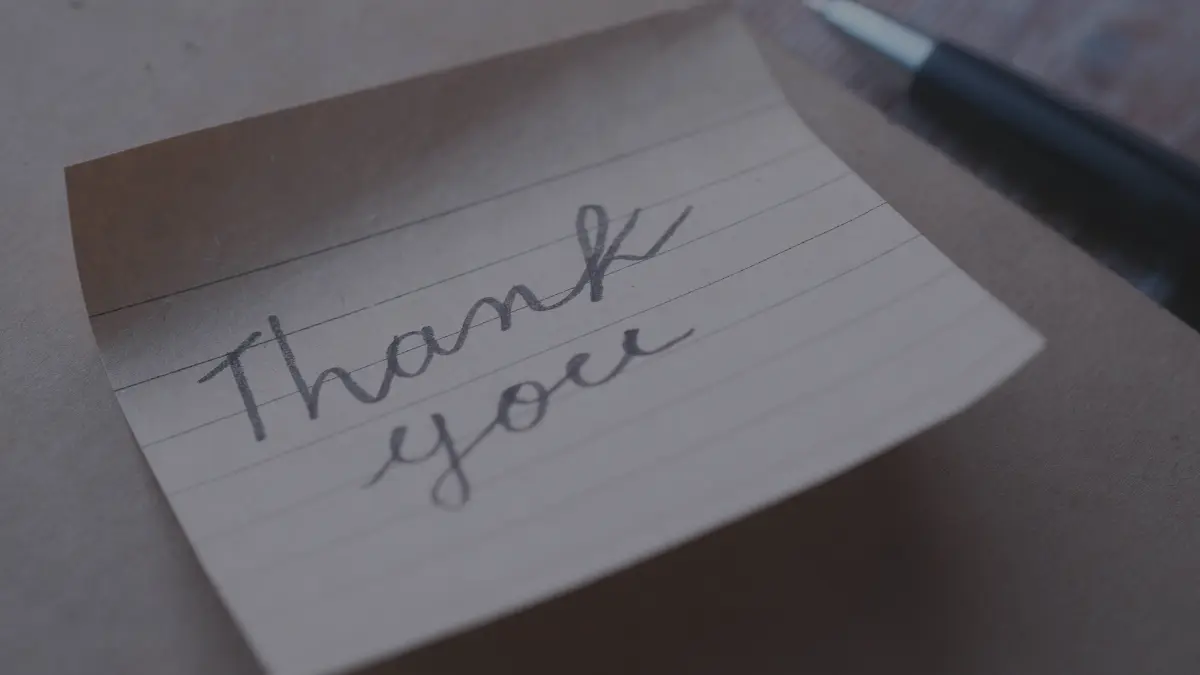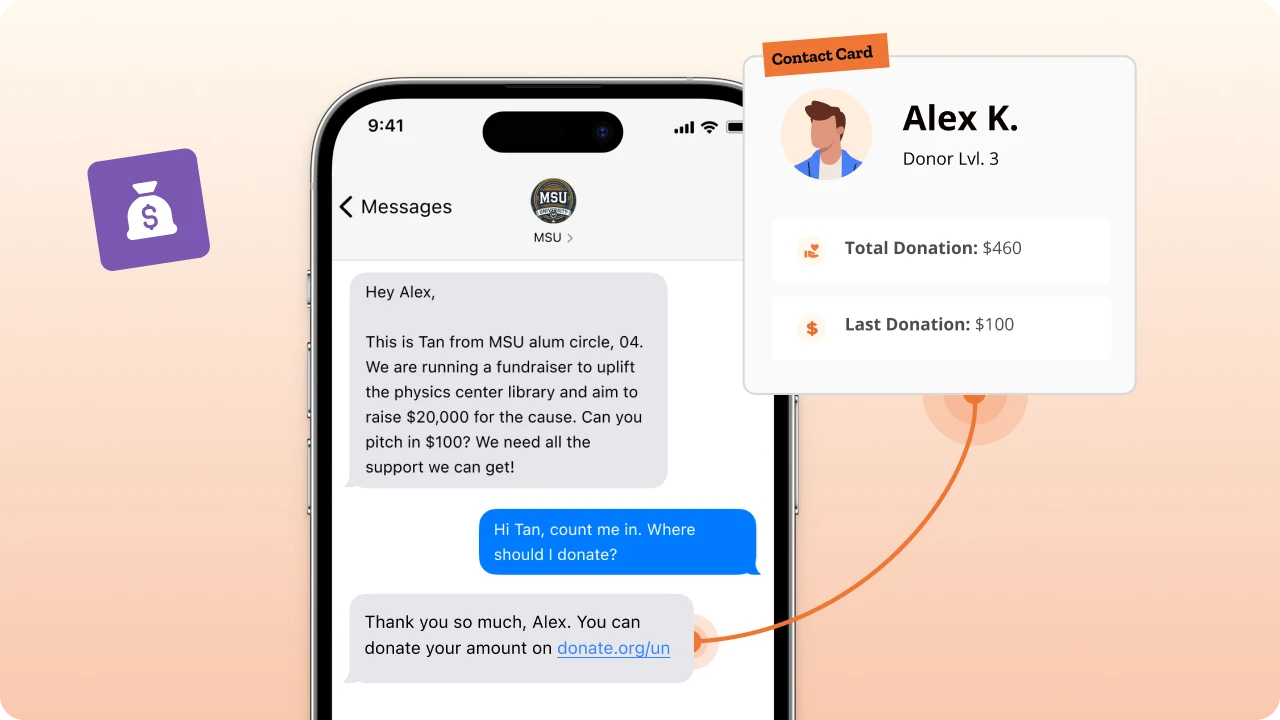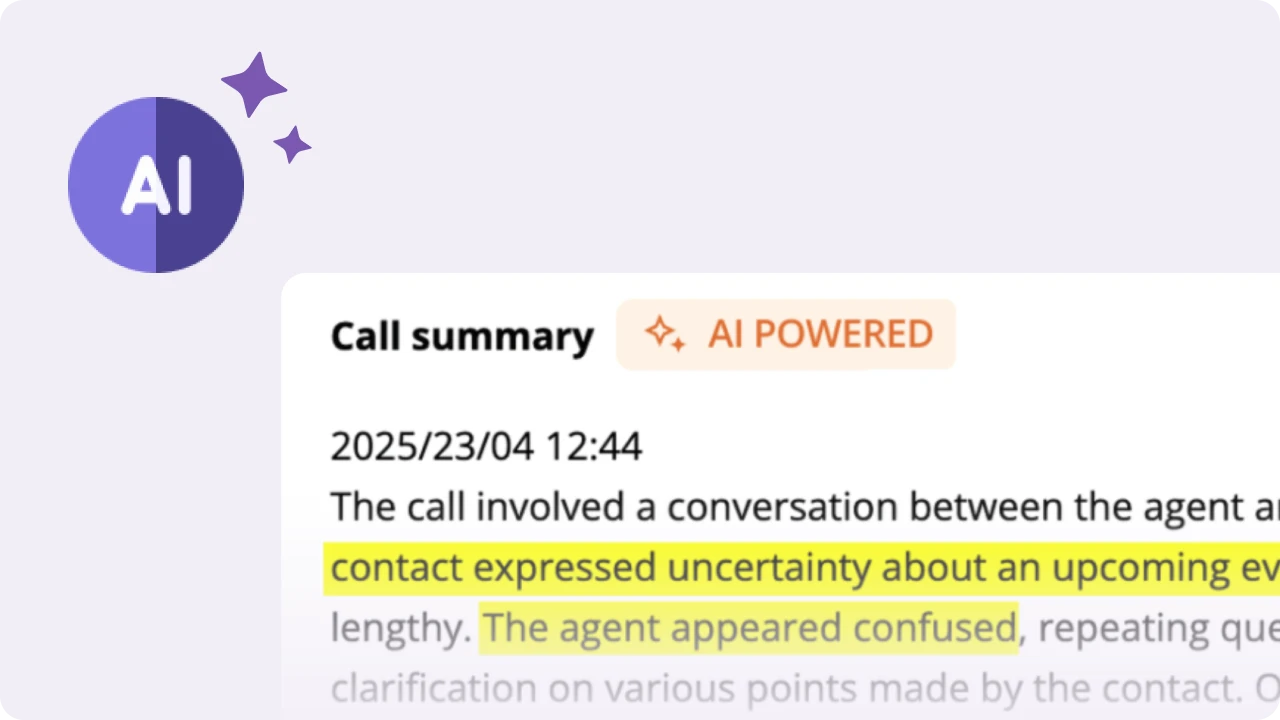Table of Contents
A donor acknowledgment letter is a legal official document required by the IRS (Internal Revenue Service) for donations of $250 or more, and failing to send one could result in a penalty of up to $5,000 per campaign or fundraising event. But beyond compliance, this letter is a powerful tool for retaining donors and strengthening your relationship, as it’s one message your supporters will actually read.
Is it just about checking a legal box?
Not at all. If you’re required to send a donor acknowledgment letter anyway, why not make it count?
With the right approach, this interaction can leave a lasting impression, helping you build loyalty and set your nonprofit apart. In this article, discover how to craft a donor acknowledgment letter that not only fulfills legal tax requirements but also deepens donor engagement – quick to read, but memorable forever.
What is a donor acknowledgment letter?
A donor acknowledgment letter (also called a charitable donation acknowledgment or gift receipt letter) is a written confirmation that the IRS requires, also known as [501(c)(3) organizations], and that many nonprofits send to donors for tax deductables reporting purposes.
Why does it matter:
- Ensures 501(c)(3) compliance with IRS rules.
- Verifies the organization tax exempt status.
- Helps donors claim deductions.
- Strengthens donor loyalty and trust.
- Provides a high-visibility touchpoint that donors always read.
- Highlights the donor’s impact and how the nonprofit provided meaningful outcomes.
Here’s an example of a Donor Acknowledgment Letter for a cash contribution of $300.

Importance of the donor acknowledgment letter
You might wonder, “What tips would I need for such a straightforward letter?”
If you think this is just a straightforward legal letter, think again!
The donor acknowledgment letter is an essential touchpoint in a donor’s journey. This is a letter that donors actually read thoroughly (to ensure all legal requirements are in place). It is a chance to express gratitude in a meaningful way. Moreover, understanding the strategic role that a donor acknowledgment letter plays in donor retention can significantly elevate your organization’s fundraising efforts.
This letter overcomes challenges like email blindness and mail clutter (that leads people to ignore letters without even opening them) because it is as essential for donors as it is for you.
Don’t you think this presents a fantastic opportunity to engage with them better?
Not just that, getting creative with your donor acknowledgment letters would also help you stand out, which would ultimately build loyalty and boost donor retention.
Since the IRS does not have a specific template for acknowledgment letters (it only specifies including the elements as mentioned above), you can get as creative with your letters as you want.
Read Also: Donor Recognition: Best Practices to Nurture Donor Relationships
When should you send a donor acknowledgment letter?
Timing is crucial to maximize the acknowledgment letter’s effectiveness both legally and emotionally.
Consider donor preferences: Some donors prefer email, others paper letters. Offering choice and respecting communication preferences improves engagement.
Best practice: Send Within 48 Hours: Prompt acknowledgments harness the momentum of giving enthusiasm and signal that your organization is professional and appreciative. This increases repeat donation likelihood.
Deadline: Before January 31: The IRS requires acknowledgment letters for prior-year donations to be delivered by January 31 of the following year. Failure may result in penalties and damage to donor confidence.
Year end Acknowledgment: Even if donors receive multiple acknowledgments throughout the year, sending a consolidated year end thank you letter or giving summary helps donors file their taxes and feel valued at year’s end.
Donor acknowledgment letters are like pancakes; serve them right away while they’re hot!
Read Also: How To Craft The Perfect Donor Appreciation Letter
Donor acknowledgment letter tips to revamp and maximize impact
Before we dive into tips to make your donor acknowledgment letter serve a purpose beyond that of a legal document, let’s look at some crucial elements it should have. Optimizing the content and structure of your donation acknowledgment letter can impact donor satisfaction and future contributions.
How do you write a basic donor acknowledgment letter?
Let’s follow the example of the acknowledgment letter given above. Here are the components that each acknowledgment letter must have:

1. Donor’s Name
Address the donor by their full name so that they can claim tax deductions under it.
2. Organization’s Name
You might print the letter on your official letterhead, which may have the name and logo of your organization. However, you still have to include the official name of your organization within the letter.
3. Contribution Details
Was the donation made in cash, through a cheque or a credit card, or was it a payroll deduction? You’ll have to make it clear how the donation was received.
For donors giving non-cash gifts (like supplies, services, etc.), you will have to include a description of what they were. Giving the value of the gift is not necessary.
4. Date of contribution:
The date on which the donation was received is important for the donor and the IRS to accurately map which year the tax deduction can be claimed.
5. Estimated Value of Goods or Services
Each letter must detail the value of any goods or services provided to the donor in exchange for the gift.
In case no exchange was made, add a statement that says so.
In cases where an exchange was made, mention a description and good-faith estimate of the value of those goods or services.
For example, an estimated value of dinner provided to the donor for their charitable organization towards the fundraising event.
Make a note of the goods or services provided to the donor, even if they were insubstantial, like bumper stickers or badges.
If the exchange was of intangible benefits (like religious benefits), you must mention that too.
6. Declaration of Tax-exempt status
The nonprofit must declare itself a 501c3 tax-exempt organization and include the Employer Identification Number (EIN) for the IRS to cross-check.
For more detailed insights, you can refer to the IRS Publication 1771.
Let’s take a look at another example of a donor acknowledgment letter.
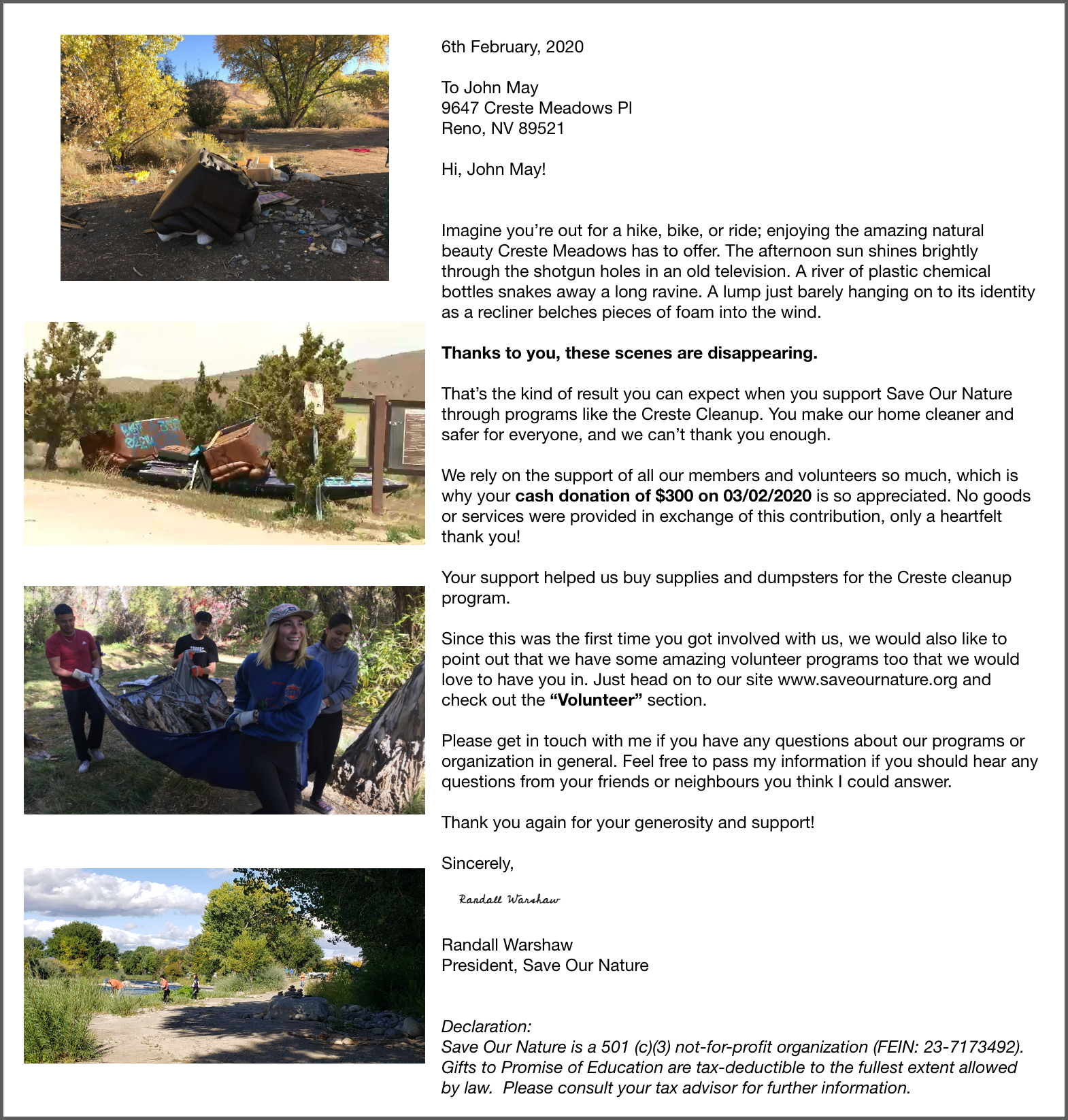
While this acknowledgment letter includes all the relevant information required by the IRS, some extra elements make it a little more interesting and engaging.
Read Also: Crafting The Best Year End Donation Thank You Letter
Best Practices: Donor acknowledgment letter
Include images
A picture is worth a thousand words.
- They grab the reader’s attention and keep them engaged. Images are always more appealing and break the monotony of text by adding a little color.
- They give you an opportunity to tell a story. As you can see from the letter above, the images are not random. They show the state of the meadows before, the action taken by the organization, and the final results.
Telling a story is always more effective in appealing to donor sentiment and winning loyalty.
- They make your letter unique. A unique letter entices readers and helps them retain crucial information about the letter (like the organization’s name or work).
What do you think a donor will recall more clearly, one among ten letters filled with text or the one letter with images?

Personalization via segmentation
Personalizing your letters can significantly improve their retention and impact. Studies suggest that personalization can boost retention rates by 39%.
But, personalization is not just about using the donor’s name and donation amount, it goes way beyond that. Personalization is about making the message more relevant to the donor.
You may ask, how could you bring this personalization level in your letters?
The answer is quite simple: donor segmentation.
Every donor has a different relationship with your organization, and you have to leverage this relationship to personalize your messaging.
You can segment donors based on their giving behavior, demographics, interests, etc., to craft your message.
For instance, in the donor acknowledgment letter example above, the letter starts with a story that only Creste Meadows residents can relate to. But the same story (messaging) won’t work with donors living in other states; it won’t be relevant to them.
By leveraging personalization in your messaging, you make the donor feel more valued rather than a cash cow. The more critical your donors think, the more likely they will return to you.
While segmentation can be achieved using any pattern, the most popular method is segmenting them based on their giving behavior, as shown below.
This segmentation aims to create messaging that helps you retain these donors and motivates them to give again.
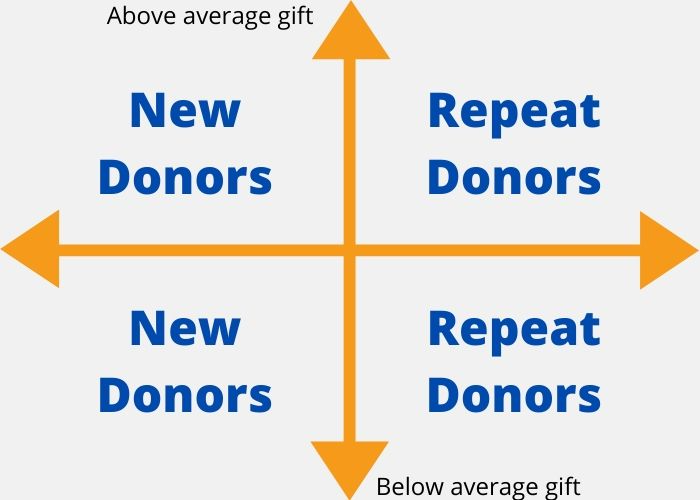
You can personalize the messaging for each segment based on the following characteristics.
New donors giving less than your average gift amount
There are two reasons new donors might give you a small donation instead of a generous donation. Since you can’t be sure which of these is the reason, it would be safe to cover both.
Here is why donors give a small donation – that is a lot less than your average gift size
1. Their financial capability is limited
If this is the case, you can use your donor acknowledgment letters to include other ways the donor can contribute (like volunteering, peer-to-peer fundraising, matching gifts, etc.,).

2. They might be prospective recurring/major donors testing new waters (to understand your impact)
To address the prospective major/recurring donors, mention the impact your work had (either in the past or with this current program they donated to).
Although the messaging in the letter above is not as detailed, here’s an excerpt from another letter to give you an idea of what your messaging must include:
You can ensure that future messaging to these donors is relevant by tracking their subsequent actions after receiving the letter.
Recognize giving patterns
For instance, in case a donor volunteers after getting the letter, you know the reason they gave less and can hence make note of that in your donor management platform.
- New donors giving more than your average gift amount
New major or mid-level donors would have put in a lot of thought before donating.
Therefore, in your message, make sure to appreciate donors for their time and consideration. You should also mention exactly how you will use their donation.
If you send major and mid-level donors welcome packages, mention their names somewhere, or call them to thank them, add this to your letter too.
Remember, the idea behind donor acknowledgment letters is to ensure that they give again. They are invested in your cause.
But they will only return if they see tangible merit in their donation. That is why telling them how their money will be used is important.
- Repeat donors giving less than your average gift amount
Never take your repeat donors for granted. This is the only way you lose them.
Your repeat donors are unique and have a higher lifetime value than those who give only once. Through regular donations, their total donation usually surpasses single donations (even of above-average gift sizes) over a period of time.
Repeat donors giving small donations are typically those with limited financial capabilities who are very passionate about your work.
Your letters to them must highlight that you know their regular support and how special they are for your cause.
You could also talk to them about a monthly giving program that would reduce their financial burden and make it easier for them to donate.
You can also include in the letter inviting them for a personal tour or special event and giving them a special mention.
- Repeat donors giving more than your average gift amount
Repeat donors who give more than your average gift amount are probably the source of a majority of your funds.
Highlight this fact in your acknowledgment letters to them and ensure they know how much you’ll be set back if they ever leave you.
Similar to other repeat donors, you can send them invites to special events or tours too.
Including a brief about the nonprofit fundraising campaigns you’ll be having (immediately or later) and inviting them for the same is also good practice (you could either send them an invitation or ask them to request one online if they wish to come).
Here is a table for your reference:
| Donor Type | Personalization Strategy |
| First-time, small gift | Suggest volunteering; recognize their entry to the community |
| First-time, large gift | Show impact stats; offer special mention or welcome kit |
| Repeat, small gift | Acknowledge ongoing loyalty; invite to monthly program |
| Repeat, large gift | Reinforce their key role; offer an event invite or a tour |
Read Also: The #1 Reason Why Donors Leave – and How to Fix It
Provide Measurable Impact
Reassure donors with clear outcomes. Mention how the fair market value of any benefits received was determined (if applicable) and how their gift transformed real lives or communities.
This trust, in turn, inspires them to return to you whenever they wish to donate.
An alternative way to showcase the impact of their donations would be with a personal story, like in the example below:
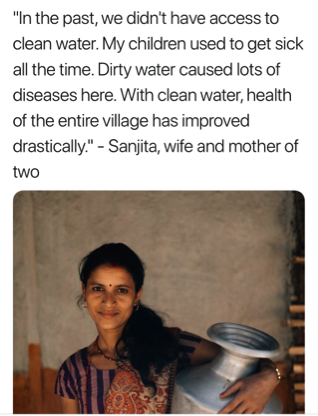
Tells a story (that donors can relate to)
Your donor acknowledgment letter doesn’t have to be a boring legal document. You can craft it to engage your donors better with a creative storytelling approach. Weaving a compelling narrative into your donation acknowledgment letter transforms them into powerful tools for donor engagement. They boost donor appreciation and help supporters emotionally connect with your mission.
“Please help Sheeba and donate for her education.”
OR
“Sheeba is a small girl with big dreams. But she needs to go to school to achieve those dreams. Unfortunately, life took a toll on her, and her parents passed away, leaving a huge gap between her and her dreams. Would you help fill that gap?”
Which of these appeals do you think would draw more donors? Quite obviously, the second one.
Stories make your work relatable and help donors connect emotionally with your cause. Sharing a beneficiary’s experience or a project outcome shows donors the real impact of their support. Combine written stories and images in your letter for a memorable, personal touch that inspires continued giving.

Donor acknowledgment letter template
Use this template to quickly compose a thank you letter that fulfills IRS requirements and makes your donor feel appreciated.
| Subject Line: Thank You for Your Donation to [Organization Name] Dear [Donor Name], Thank you for your generous gift of [amount] on [date]. Your donation is already making a difference – [brief impact statement or story]. No goods or services were exchanged for this contribution. Our EIN is [number]; your donation is fully tax-deductible. With appreciation, [Real Signature] [Your Name/Title], [Organization Name] |
Takeaway
Treat donor acknowledgment letters not just as a formal way to thank them, but to engage with them, retain them, and build a relationship.
The donor acknowledgment letter is your most potent touchpoint as people will likely read it thoroughly. This is why it has the power to make a lasting donor’s impact on donor retention and loyalty. Make sure to use it wisely.
Donor Acknowledgment letter: FAQs
How do I write a letter to acknowledge a donation?
Begin by thanking the donor by name, mentioning the specific gift and date, describing its impact, and confirming your organization’s tax status and EIN to ensure IRS compliance.
How do you write an acknowledgment letter?
Use a warm opening, clearly state the donation received, express gratitude, highlight how their support helps your mission, and include legal details for records.
Are donation acknowledgment letters required?
Yes, IRS regulations require written acknowledgment letters for single gifts of $250 or more for donors to claim a tax deduction.
What is an example of an appreciation letter for donations?
“Dear [Name], Thank you for your generous donation of $[Amount] on [Date]. Your support helps us [describe project or impact]. No goods or services were exchanged; our EIN is [Number].”.
How do I send an acknowledgment letter?
Send the letter promptly by email or postal mail, ensuring the format is professional and includes all required donation details for the donor’s records.
How do I write a simple donation letter?
Keep your message brief and heartfelt, mentioning the donor’s name, donation amount, date, and specific impact, with a sincere thank you and your organization’s details.
